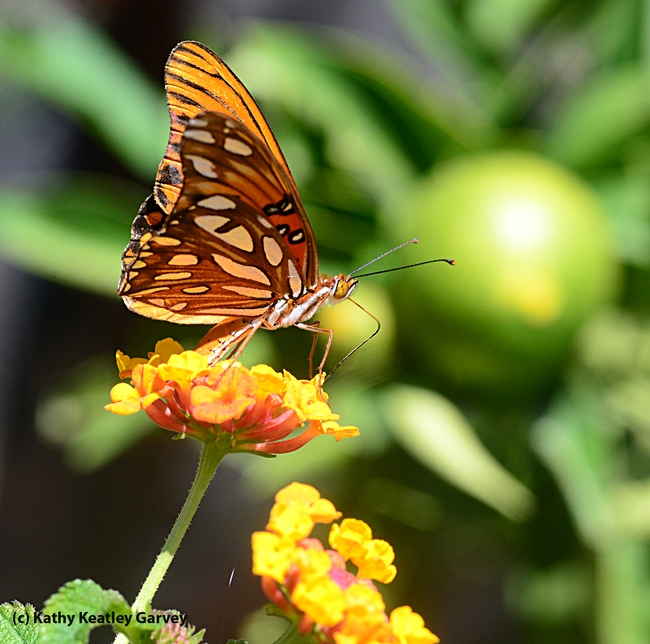Ah, the Gulf Fritillary...
We spotted this orange-reddish butterfly nectaring lantana last Saturday near downtown Vacaville. In fact, the patch of lantana (family Verbenaceae) drew assorted butterflies, including buckeyes, alfalfa, monarchs, and painted ladies. A few honey bees and native bees tried to get their share.
Lantana and Gulf Frits. These multi-colored blossoms and the multi-colored butterfly, both found in the tropics and subtropics, are a study in brilliance.
On his website, butterfly expert Art Shapiro, professor of evolution and ecology at the University of California, Davis, says the Gulf Frit (Agraulis vanillae) was introduced into southern California in the 19th century, and was first recorded in the Bay Area before 1908. Once prevalent in the Sacramento area in the 1960s, it "seems to have died out by the early 1970s," he said.
Then in 2009, it began making a comeback in the Sacramento area.
Now it appears to be thriving in some areas, at least where its adopted host plant, the passion flower vine (genus Passiflora), grows. If you have a passion flower vine in your yard, you may very well see the spiny orange-and-black caterpillars feeding on the leaves. And if you have lantana or Mexican sunflower (Tithonia) in your yard, don't be surprised if a few adults drop by for a sip of nectar.
No wonder that commercial companies mass-rear these exotic-looking butterflies for release at weddings, garden parties and other social events.
Attached Images:

Gulf Fritillary on lantana. (Photo by Kathy Keatley Garvey)

The Gulf Fritillary is one of the showiest butterflies in California, according to butterfly expert Art Shapiro of UC Davis. (Photo by Kathy Keatley Garvey)

On its underside, the Gulf Fritillary is spangled in iridescent silver. (Photo by Kathy Keatley Garvey)